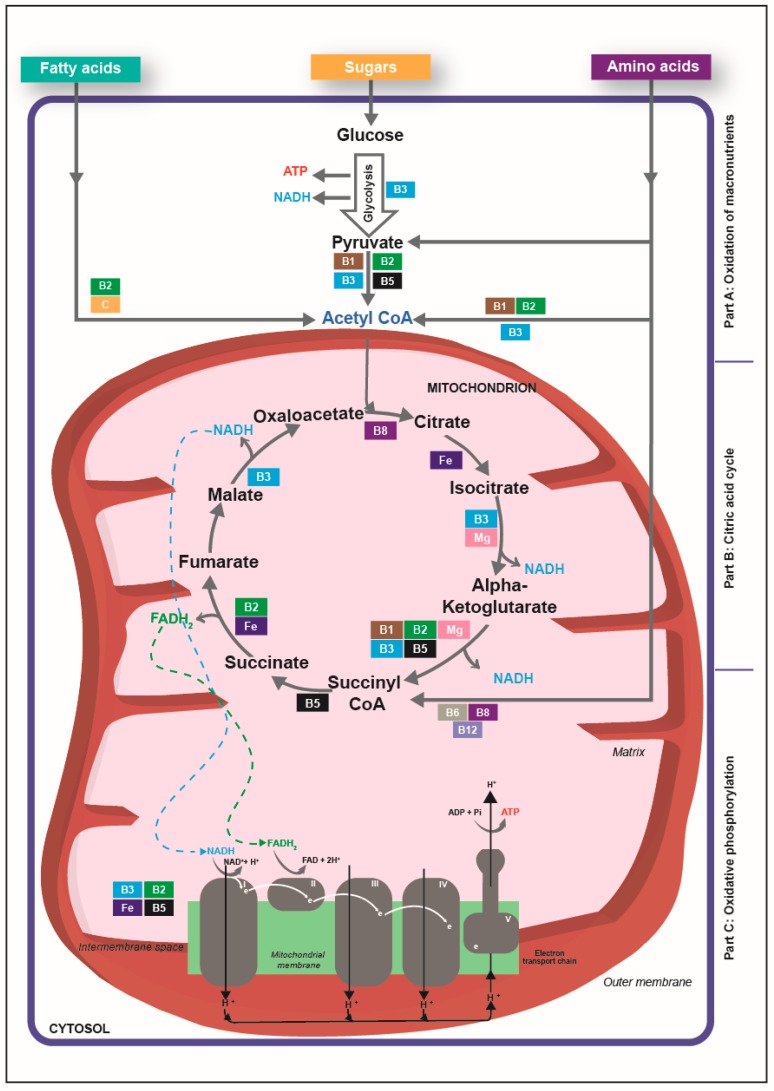Figure 1.
Overview of the involvement of vitamins and minerals in the major pathways of cellular energy production. This figure displays a simplified scheme of energy metabolism. Briefly, macronutrients are oxidized (part A) into acetyl-CoA through several pathways including glycolysis, which produces pyruvate from glucose, and vitamins B1, B2, B3, B5 and C play important roles Then acetyl-CoA enters the citric acid cycle (part B), which generates energy as NADH and FADH2 through a series of eight oxidations that involve vitamins B1, B2, B3, B5, B6, B8 and B12 as well as iron and magnesium. Finally, the electrons of NADH and FADH2 are transferred to the electron transport chain (part C), where they provide energy used to generate ATP molecules; this step needs the input of vitamins B2, B3, B5 and of iron.

